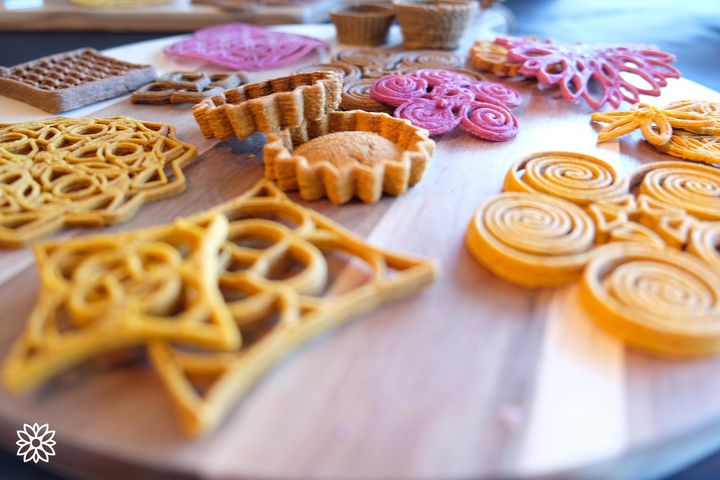
A company is 3D printing apparently edible food treats made from waste.
Over the many years I’ve been following 3D printing I have seen plenty of highly unusual 3D printer materials, most made for, or at least associated with, a more eco-friendly environment. I’ve seen materials made from coconuts, bamboo, or recycled drink bottles. I’ve sensed the wafty aroma of 3D printed coffee material, and quickly run away from the revolting odor of algae-based filament.
But now someone has made 3D print material from waste food. Food you would normally throw out.
Before I go further, I must confess I cannot get an image out of my mind: the view when I open up my organic waste container in my kitchen, the contents of which eventually ends up in the compost heap.
Somehow I cannot imagine 3D printing that stuff, and then (takes a breath) eating it!
At first glance it seems that is the plan by Eindhoven-based Upprinting Food, a startup specializing in recycling organic food waste. However, it turns out their technology is not nearly so dark.
So what exactly are they doing?
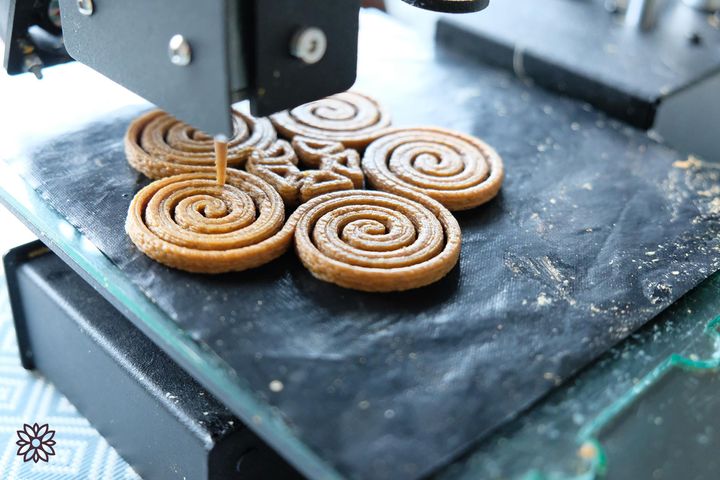
It seems that like my kitchen, everyone tends to waste some proportion of organic food products, up to one-third according to Upprinting Food. These might be vegetables that are a bit wilty, a banana that’s slightly overripe, or bread that’s a day too old. These are routinely tossed and in some cases end up in a compost pile where they will fuel future organic growth. But often it’s simply more landfill.
The folks at Upprinting Food want to short-circuit that cycle through a 3D printing approach. They recognized that even though the food products are being thrown away, many of them are technically still edible. They just don’t “look right”.
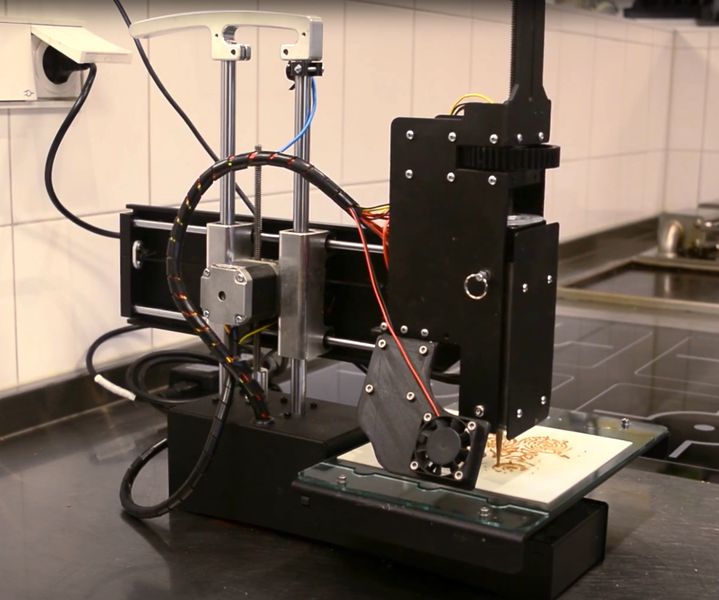
This is the raw material for their process. They explain:
“By blending and combining the different ingredients from residual food flows, purees are created, which then are being 3D printed by a food printer. These prints are baked and dehydrated for crunch and longevity. We currently have created several recipes, both bread, and rice-based, and we are working to create new recipes all the time. We are focusing on collaborations with high-end restaurants to help them reduce their residual food flows and to create a unique dining experience.”
Basically, they’re extruding food paste into cracker-like products that are entirely edible.
By combining this paste with 3D printing, it’s also possible to 3D print a variety of unusual shapes that would not normally be found on the food product shelf, even custom designs. However, the food paste is not a particularly strong building material, so most of their designs tend to be flat structures with no overhangs.
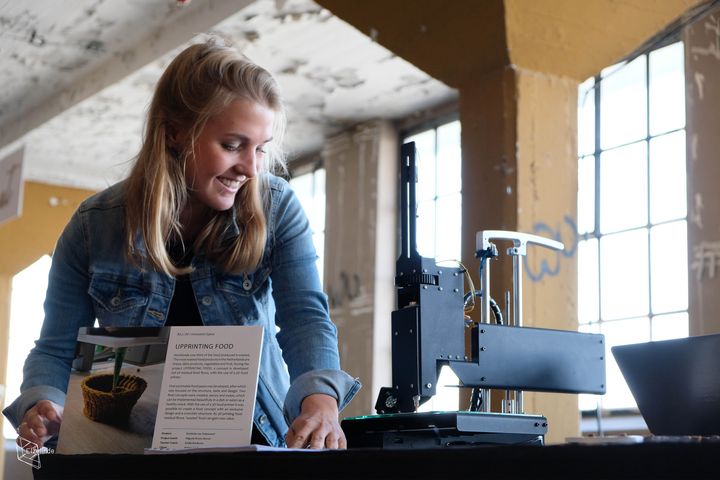
The concept was originally developed by founder Elzelinde van Deleweerd as a graduation project in 2018, following which Upprinting Food was founded. Today the company boasts a team of specialists in both 3D printing and food technologies.
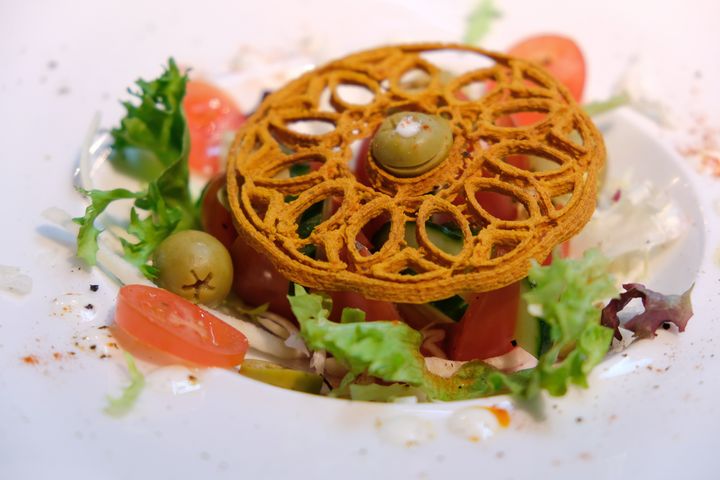
This is not a technology that you’ll soon find in your own kitchen, as the recipes would require certain amounts of specific food waste that might not be available at any moment in a personal kitchen. However, in commercial kitchens where the flow of organics is much higher, there is a far higher probability of having the right waste available on a regular basis. Thus Upprinting Food tends to work with larger kitchens.
They explain their three different services:
- Design Services: We co-create with chefs to create unique and personalized designs that really fit their dishes.
- Unique Recipes: We provide chefs recipes to print from their own residual food flows, to help them reduce their food waste.
- Professional Training: We train chefs and staff to work with a 3D food printers and food waste in their own restaurant.
It’s possible restaurant customers may not even realize they’re eating “waste” food when they bite into those crunchy shapes. On the other hand, is that food really waste if it is edible?
That’s the change in thinking Upprinting Food is trying to make.
Via Upprinting Food
